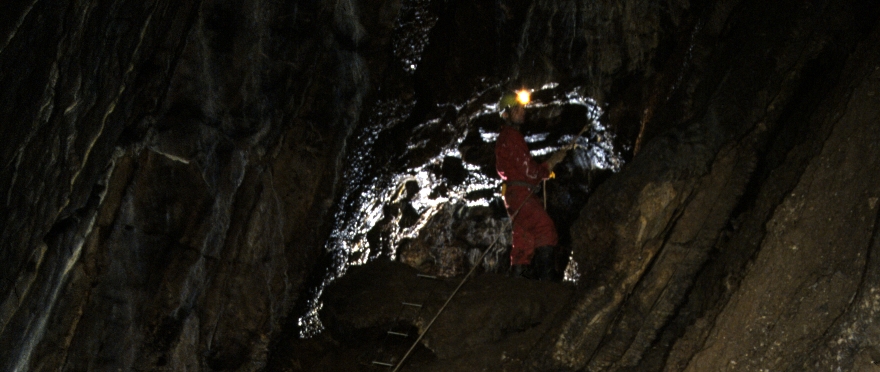Cornish Miners - but still no lead working
After the publication of Catcott’s book and of Rudder’s New History of Gloucestershire (1779) which included a different version of White’s survey, no records of explorations can be found until the middle of the next century. Then, in July 1842, Catcott’s account was republished as a descriptive Broadsheet issued for an exhibition of Fine Arts, Natural History etc. held in Bristol (Catcott, G.S. 1842). It may have been the publicity engendered by this exhibition that produced the next activities at the cave for, in 1843, the following notice was published in Felix Parley’s Bristol Journal (Anon, 1843):
"PEN PARK HOLE.- There was a work published about 90 years ago, wherein it was stated that lead was supposed to exist in Pen Park Hole, but it is somewhat remarkable that no effort should have been made to ascertain the fact, until within the last few weeks, when an examination was made by some Cornish miners, under the superintendence of Richard Rowe, Esq. A few days since, Mr. R. accompanied by the men, descended the “hole,” which is a natural pit of very considerable depth, they entered it in a slanting direction, much to the peril of their lives, and after descending to the depth of from 20 to 30 fathoms, they came to a large body of water, quite sufficient to float the largest vessel in the port of Bristol. Some very excellent specimens of lead ore were here obtained, yielding as much as 75 per cent., which has lead to some further operations, with a view to the regular working of the hole. For this purpose a large boat has been let down, by means of which the party have been able to explore the recesses. The water is eight fathoms deep, twelve fathoms long, and fifteen fathoms broad. We wish the undertaking may prove successful."
However, as with so many mining ventures, this project did not really get off the ground and “for some reason” was soon abandoned (Latimer 1887), but it is to this period that the evidence for mining to be found within the cave can be most reasonably dated. A careful study of the interior of the cave has shown evidence of mining activity of two sorts. The East (present) entrance shaft, and the passage below it, have been enlarged by blasting, the remains of numerous shotholes may be found and parts of the Approach Passage have been cleared and drystone walls built. All this seems to have been done to facilitate entry to the cave, but, significantly, the intensity of work falls off the farther one gets from the entrance. This is consistent with work begun in hope, but soon abandoned. This work can fairly well be dated to this time. The use of blasting indicates a date of no earlier than the introduction of gunpowder to the area, in about 1684 (Beaumont, 1685) and there is scant evidence of mining between that date and 1843. Certainly, this work could not have been carried out prior to the first known record of the cave, in 1669. Gunpowder was first used for blasting by Casper Weindle at Schemnitz, in Germany, in 1627 (Hoover and Hoover, 1950); but there is no evidence for its introduction into any English mines before 1670, when it is reputed to have been used in Dutchmans Level at the Ecton copper mines in Staffordshire (Rieuwerts, 1983).
The second type of evidence for the activities of the miners is the presence of numerous places, throughout the cave, where the calcite lining has been punched through either to sample it or to see what lay behind it. The results of this sampling would presumably have led to the abandoning of the work, as the results would have proved disappointing. There is lead ore to be found, but only in small quantities and mainly in the first chamber (Bristow, 1963). There is no evidence for the large scale removal of material from the cave at any time, only for a programme of sampling, as implied by the historical record.
This work may be dated to about 1843, rather than to the above mentioned 1769 trial, as the fact of relatively major works around the entrance carried out during what was to prove a very short term operation is characteristic of the activities of the Cornish miners of the nineteenth century rather than of the local men of a century earlier (c.f. Stanton and Clarke, 1984).
The Cave is Closed
In the late Eighteen-seventies, the land came into the possession of William Smith, Esq., who, to prevent accidents, had the cave securely closed (Nicholls, 1879). For many years after, nothing more could be seen of the site other than a slight dip in the ground and even this vanished after it was filled with builders’ debris when Pen Park Road was made in 1922.
